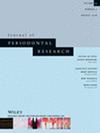Repercussions of Long-Term Naproxen Administration on LPS-Induced Periodontitis in Male Mice
Abstract
Aims
Chronic periodontitis is the sixth most prevalent disease worldwide and the leading cause of tooth loss in adults. With growing attention on the role of inflammatory and immune responses in its pathogenesis, there is an urgent need to evaluate host-modulatory agents. Non-steroidal anti-inflammatory drugs (NSAIDs) drugs play a crucial role in managing inflammatory conditions. This study examined the repercussions of long-term naproxen use in a periodontal inflammation model known for causing significant inflammation, disrupting epithelial and connective tissue attachment and leading to alveolar bone destruction.
Methods
Thirty BALB/c mice were treated with naproxen for 60 days or left untreated. From Day 30, an LPS solution was injected into gingival tissues three times per week for four weeks. This model enables LPS control over the inflammatory stimulus intensity throughout the experimental period, leading to chronic inflammation development involving both innate and adaptive immunity. The liver, stomach and maxillae were submitted to histological analysis. The oxidative damage was determined by measuring lipid peroxidation (LPO) in plasma and gingiva. The activities of myeloperoxidase (MPO), eosinophil peroxidase (EPO), superoxide dismutase (SOD), catalase (CAT), glutathione peroxidase (GPx) and levels of leukotriene B4, the interleukin (IL)-1β, TNF-α, IL-4, IL-5, IL-10, the chemokine CCL11 were also assessed in the gingival tissues.
Results
The results indicated that none of the groups displayed any indications of liver damage or alterations; however, the NPx treatment led to severe gastric damage. In contrast, the treatment alleviated periodontal inflammation, resulting in a reduction of chronic and acute inflammatory cell infiltration and prevention of connective tissue loss in the gingival tissue. Additionally, the treatment increased the activities of endogenous antioxidant enzymes SOD, CAT and GPx, as well as the IL-10 cytokine, while decreasing the levels of leukotriene B4, TNF-α, IL-4 and IL-5. Furthermore, the activities of MPO, EPO and LPO were reduced in the treated groups.
Conclusion
These results suggest that NPx effectively inhibits periodontal inflammation in an inflammatory periodontal model. However, the harmful gastric effects dramatically limit its long-term use.


 求助内容:
求助内容: 应助结果提醒方式:
应助结果提醒方式:


